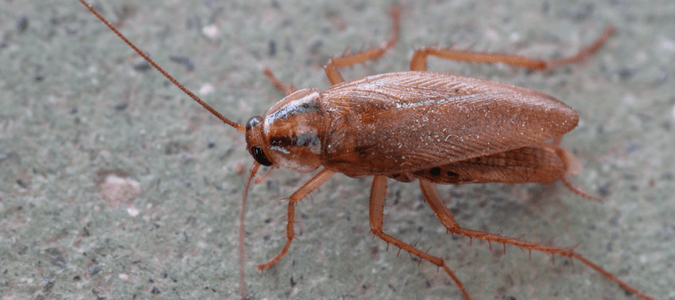What is a German Roach?
There’s no good time to find a cockroach running across your kitchen floor. Unfortunately, most homeowners have encountered such a sight more than once. And with more than 3,500 species worldwide and 55 species in the United States, a scurrying cockroach is a common household occurrence.
Cockroaches are incredibly adaptable and have adjusted to the earth’s changes for more than 300 million years; their diet, size, and ability to reproduce quickly and in large numbers enable the species to endure the test of time.
The two most common species found in homes throughout the United States are the German cockroach and the American cockroach. What are German roaches, exactly? Where do German roaches come from? How can you tell which kind of roach may be inside your home?
What They Look Like
Appearance is one of the easiest ways to identify the type of cockroach living in your home. Adult German cockroaches are light brown or tan in color and range from 1/2 inch to 5/8 inches in length. They also have two dark horizontal stripes behind their head stretching down their back.
American cockroaches are much lighter in comparison, with a reddish-brown appearance and light-brown coloring on the back of its head. As one of the largest cockroach species, the American cockroach is much more giant than its German counterpart, measuring up to 1.5 inches long.
Where They Live
While cockroaches can live in many different environments, both German and American cockroaches prefer warm, humid areas. As a result, they’re typically found indoors near kitchens and bathrooms. They can also be found in other environments where food and moisture are available.
Where Do They Come From?
You would think these pesky critters hail from Germany, but surprisingly, that isn’t the case. Since cockroaches have roamed the Earth for millions of years, entomologists can only guess how they made it to the United States. Experts believe that German roaches came from Southeast Asia and were transported here by explorers, such as Marco Polo, who traveled from Venice to Beijing and then back to Europe. Another theory is that the German roach traveled across the ocean from Africa on slave ships. Although entomologists are unsure about how German cockroaches made it here, there is one thing they do agree upon: these roaches are now well-established and there is little hope of eradicating them for good.
German cockroaches usually enter your home via bags, boxes, or containers. New or used appliances can also bring these critters. Once inside, the pests can quickly move around or between structures, using shared plumbing and pipes for travel.
Cockroaches are nocturnal creatures who hide in dark spaces during the day but come out at night searching for food.
What They Eat
German cockroaches will eat just about anything, including soap and books. But given the choice, they prefer starches, decaying sweets, greasy foods, and meat products. This species is known for its scavenger-like abilities when finding food, feeding on dirty dishes left overnight, or crumbs sitting on the counter and table-tops missed during cleaning.
Like German cockroaches, the American cockroach doesn’t have a hard time finding food, consuming anything from paper products to dead insects to organic matter and sweets; they’re also known for their scavenger-like personalities.
How They Reproduce
Compared to other cockroach species, German cockroaches are the most prolific. In one year, a single female cockroach and her offspring can produce up to 30,000 cockroaches. On average, a female will have 4 to 6 egg cases in their lifetime, each containing between 30 and 40 eggs. The female carries them with her to protect her eggs until they’re ready to hatch.
A Toxic Roommate
While there are many differences, American and German cockroaches can be hazardous to your home.
For starters, they’re known to carry pathogens. And because they tend to lurk in kitchens, they’re responsible for many foodborne illnesses like Salmonella and E. Coli. Contaminated food can also cause food poisoning, dysentery, and diarrhea.
Apart from foodborne illnesses, cockroach excrement and cast skins produce allergic reactions. Such reactions include rashes, watery eyes, sneezing, and asthma.
Signs of an Infestation
Because of their quick reproduction rates, it’s essential to notice the signs of a cockroach infestation as early as possible. Be on the lookout for droppings, egg capsules, and odors.
Droppings of German cockroaches are small and dark and often found on countertops and inside drawers. American cockroach droppings are slightly different, with ridges on the side and blunt ends. The droppings are small and often found in dark areas where the cockroaches hide.
Egg capsules are found where cockroaches frequent but sometimes hide behind appliances or under cabinets. Both species create a “musty” smell and will only be noticed as the infestation begins to grow.
Call the Pest Control Experts
ABC Home & Commercial Orlando has a team of highly trained pest experts. Whether you’re dealing with pests that fly or cockroaches that scurry across your floors at night, our team can work with you to create a treatment plan that best fits your needs. We can also provide you with ways to keep pests out for good.
If you have a cockroach infestation—American or German—, don’t hesitate to contact ABC Home & Commercial Services. We take a customized approach to every situation and get the job done.
